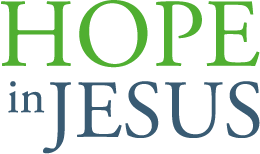Saint Thomas (also known as Doubting Thomas – John 20:24-29)) said quite explicitly:
“I must see the wounds before I believe!”
And his struggle to accept Jesus’ resurrection without first witnessing the crucifixion wounds is quite understandable.
Because the idea that the other disciples had seen Jesus alive just days after his death was completely beyond his comprehension.
And like many Christians throughout history, Thomas, in the face of Christ’s death, sought proof of the seemingly unbelievable miracle of his resurrection.
So I say, his demand for evidence was entirely reasonable.
Thomas, often labelled as the doubter, was a brave and loyal friend of Jesus.
So, today, he should be recognized for his courage in questioning the disciples’ extraordinary claim of Jesus’ resurrection until he could understand for himself.
Because the approach also serves as a model for us, as most of us will question the truth of the claims made about Jesus at some point.
But faith is not a blind leap into the unknown; it’s a journey towards enlightenment.
So like Thomas, we search often for light in the darkness and scrutinise the scars and the crucifixion wounds—as we seek reassurance in our faith.
And we all have the right to demand, “Show me – if Jesus is alive today, then show me something, give me just one thing to make sense of the faith so many have in Jesus!”
Interestingly, the disciples were filled with a palpable fear.
Because they did not fully understand what they had witnessed at his death and feared potential harm from the authorities.
Apart from Thomas, who had gone off on his own somewhere, they were all hiding in a locked room.
Yet, Jesus managed to enter the room with his well-known greeting ‘Peace be with You’. Meaning something like, hello again, don’t be alarmed, everything is going to be alright.
This timeless greeting offered to the disciples in a locked-down room in Jerusalem is still extended, by the risen Lord, to his disciples in today’s troubled and fearful world.
Jesus, displays his compassionate self, as he reveals his terrible wounds to Thomas, who then perhaps understood more fully than the other disciples, and acknowledged this by exclaiming,
“My Lord and My God!”
Thomas acknowledged his full acceptance of Jesus as his leader and his God, and he encapsulated our faith with those words; he meant that Jesus is the Son of God, our Savior, the way, the truth, and the life.
As we hold this truth in our hearts, particularly in times of trouble, we can take comfort in the knowledge that Jesus’ spirit is alive today in the faithful and that we who believe, without having seen his wounds, are acknowledged by Jesus as blessed.
When we accept Jesus as our Lord and God, we can live our lives in the sure and certain hope that because of Christ’s death and resurrection, we now have hope of life eternal.
So, how can we be sure today that Jesus was resurrected from the dead?
While SaintThomas had the privilege of witnessing Christ’s wounds firsthand, we must rely on the Gospel accounts, which reveal how the disciples gradually came to understand the meaning of the resurrection, as they remembered Jesus’ prophecies.
Similarly, our understanding of the resurrection unfolds gradually as we probe, ask questions, and discern the truth of Jesus’ identity for ourselves.
St John’s Gospel and letters were a wonderful guide for first-century Christians who also had many questions.
They had accepted Christ as their saviour, but after his death faced uncertain times, and had to think well outside their comfort zone to make sense of what had happened.
So, John, who was one of Jesus’ closest disciples, wrote of his personal experiences to teach them what he had learnt firsthand from working alongside him.
In John’s letter written to the early churches, we heard this morning (1 John:1), that he testifies to the truthfulness of all that he has written in the letter, and what he and the other disciples had seen and heard concerning Jesus.
John includes similar testimonies in his other letters and his Gospel too.
So we have John’s teachings as well as the other Gospels, letters and teachings from the early saints to provide us with insight.
But where is God in the World Today?
People sense God’s presence in many different ways. Some in music or other arts, but one of the places I sense God’s presence the most in His creation, and Jesus often used the natural world, and patterns of nature, to explain God’s Kingdom, so for me, the fine details of nature are a good place to draw closer to him.
For example, in the Parable of the True Vine, the vineyard owner represents God caring for the grapevines. The vines represent us needing guidance.
When the vine is about a foot high, the owner attaches it to a trellis. If he didn’t do that, the vine would not grow strong and produce perfect grapes – it would simply lie in the mud on the ground.
As the vine grows taller, the owner weaves it up higher onto the trellis at regular points, because he is guiding the vine to the sun for more light.
And, the vine needs this support because it can’t hold up the heavy ripe grapes up to the sun by itself.
Today, Jesus is our support trellis.
When we stay close to him, we are like the vine staying close to the trellis, and Christ holds us up, to give us strength, as we follow in his steps.
As we stay close to Jesus, our faith develops and we find that no matter what external events occur, his guidance will sustain us, and our compassion and courage will grow.
Then we find that our souls are being gradually refined, as we slowly start producing fruits of the spirit.
Reflection on Doubting Thomas
As I incorporate the hope Jesus’ resurrection offers into my daily life, I have come to realise that He has been my support and strength all along, holding me up through the trials and tribulations we all face.
But still at the end of the day, unlike Doubting Thomas, none of us can see or touch Jesus’ wounds – for proof of our faith.
Because faith today is intangible and cannot be seen or touched, it can only be ‘felt’ today in a searching and open heart.





